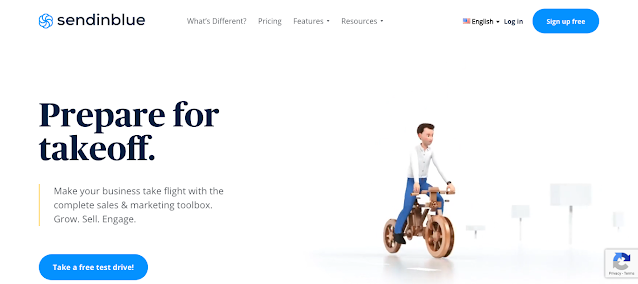Heavy sighs, short replies, reduced patience -- you know when a customer's getting frustrated. Worse the physical signs show that they are losing interest in everything that you are saying and your chance at keeping their business is fading quickly.
Often, difficult or even angry customers are not expressing frustration with you but these emotions are often tied to external situations unrelated to the discussion you are currently having. Often we explain to our salespeople that this is where your great communication skills work the best. Draw on your past experience with people and read the situation tactfully.
Here's how you can manage difficult customers. 16 tips to help you be the best salesperson.
1. Practice reflective listening.
When you're upset, has someone saying "I understand" ever made you feel any better? Or do you feel "this person doesn't even understand anything!!" instead?
Alternatively, do this instead.
Customer: "I'm frustrated because we have a limited budget and you're unwilling to offer us a discount"
Successful salesperson: "So, what I'm hearing is that our pricing is a barrier for your business. Your budget is tight, and I'm not offering a discount that meets your needs. Is that correct?"
If you've understood their frustrations, then move on. If not, say, "Tell me more, so I can better understand."
Here's a big warning: Never promise you'll fix the situation -- because you might not be able to. Your goal at this moment is to make your customer feel heard and valued.
2. Consider their effect heuristic (mental shortcut)
Effect heuristic is a mental shortcut. Do this to help you make quick. efficient decisions based on how you feel toward the person, place, or situation you're considering. Simply, this means that we are all making decisions and judgments based on each of our own worldviews and experiences. This is our bias.
During these situations, objective facts carry little weight for us instead we rely on the decisions and situations through our own internal beliefs and opinions. This is often influenced based on what we already know.
For example, if your customer consistently asks, "What's the catch?" and delaying the onboarding process with rescheduling and endless due diligence, don't say, "You've already purchased a year's subscription of this software. Can we move forward?"
Instead, ask questions that understand the root cause of their problems. Examples below include:
- I'd like to understand, tell me more about why you're sceptical
- What can I do to relieve your fears?
- How can I help you feel comfortable enough to move forward?
3. Tap into the beginner's mind
Approach every situation as if you were a beginner. Adopting this way of thinking has surprising results. You enter the conversation with the "don't know" mind which keeps you from prejudging a customer or their situation.
This encourages you to instead of saying, "you told me you wanted to increase your inbound lead generation by 20 by end of this month and these delays won't make this possible". This adds to the frustration that the problem has not been solved.
Try saying, "It looks like these delays won't be able to meet our lead generation goal. But let's see what we can do to get the results we're looking for". This approach acknowledges the problem but immediately begins working towards a solution.
4. Let go of fear
First, let go of the idea that you need to fix everything. When sitting down with a difficult customer, your biggest job is to listen, understand and discern what are the next steps -- not to immediately produce a solution.
Instead of apologizing, just jump straight in and say, "It's unfortunate that __ happened. I'm aware of how this is affecting your business and I appreciate your patience as I work to resolve this matter".
5. Chunk the problem
This is the process of taking one big problem and breaking it into several smaller and more manageable parts. These small parts will be easier for you to tackle and will promote everyone involved to be more willing to start dealing with the issues.
6. Anger is only natural
This is only natural. In the heat of the moment, an angry customer can be hard to reason with. Avoid the tendency to justify your position. Instead, understand that they are just feeling undervalued and attempting to control the situation. Take your angry customer's frustration seriously but not personally. The key is to remain calm. Actively listen and confirm that you've understood their frustration and thank them for communicating it and inform them that you will get back to them with a solution. Give them time to cool off, and consult with another senior colleague on the best way forward.
7. Keep calm and carry on
Conflict is part of business, and how you react under this heat impacts your future success and customer relationships.
Do not treat someone with disrespect as this can reflect negatively on you and your company. Ensure that you manage your reputation and that "the customer is always right" still remains true - although to a certain extent. Emotional intelligence can be used to calm the storm, so use these tips for navigating your next conflict:
- Maintain a calm and professional tone while also remaining assertive.
- Refrain from name-calling or finger-pointing.
- Never say or write anything that can be used against you.
- Always resolve disputes in person or over the phone. Email is not an effective tool for having out disagreements.
8. Use your support resources
Although this should be used on a case-by-case basis, here are a few resources your reps should learn to master.
- Place a customer on a strategic hold to buy time or de-escalate emotion.
- Setting up a screen share or recording troubleshooting steps to explain a complex solution.
- Asking a colleague for additional confirmation when you know your solution will work -- this can build rapport with a customer who's dubious of your advice.
Conclusion
After a minute or two of actively listening, you'd be surprised that difficult customers can be managed with effective strategies and emotional tactfulness.











































